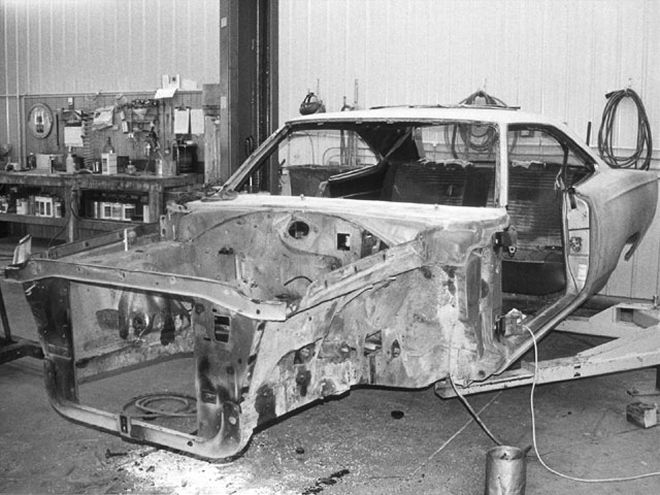

Back in the day, there weren't any quick plastic fillers to hide your mistakes under when doing body work. The old-school method of finishing a panel's contours or welded joints was to use lead. Lead filler is the way the factory did it, it's how custom coach builders did it, and it's how the hot rodders and customizers did it.
With the advent of "quicker is better" plastic body fillers, the method of torch and rod was all but forgotten, and today it's about as common as timber-frame barn and wooden-boat construction.
While different types of filler materials have been developed over the years, they still don't have the same properties lead has, namely, no moisture absorption and good adhesion. Manufacturers of the plastic fillers have come a long way in making their products less prone to absorbing moisture (causing swelling, paint lifting, and distortion, or "waves"), and they adhere to the car's sheetmetal better than before, but lead is still the benchmark by which the plastics are measured.
John Balow at Muscle Car Restorations in Chippewa Falls, Wisconsin, swears by lead filler as opposed to plastics, applying a thin layer of lead over every weld he performs on a restoration. Besides the advantages of good adhesion, no moisture absorption issues, and easy workability, John brings up a point we hadn't considered: "The melted lead gets down into the welded seam like a liquid would, completely filling it," he says. "It's filled all the way through the joint, so no moisture can get to it from behind either."
We've met several guys who have spread lead their whole lives, including one guy who used to cover the factory seams with it on the assembly line in Kenosha back when it was still American Motors, and they've all said the same thing: "It's easy with a little practice."
As with all bodywork, prep makes all the difference, and some precautions need to be taken with the car in order to avoid trouble down the road. The tinning butter used in this process is a mild acid, so it's very important that it be completely neutralized before paint is applied to the repaired area, otherwise the acid will wreak havoc with the paint. To accomplish this, Muscle Car Restorations covers all welded seams and other areas to be filled with masking tape, and then primes the car to seal the sheetmetal. This puts a barrier between the surrounding metal and the air and moisture. After the panel is worked with the lead, the whole area is thoroughly rinsed with "gallons and gallons of water," according to John (hence priming the whole car). This will wash away any residue of the acid.
Finally, take precautions for personal safety. When working with lead, be sure to do it in a well ventilated area, stand up-wind of the fumes, and immediately clean up all the lead shavings from grinding.
We followed along as John leaded over a seam in the quarter-panel of this car at his shop, and we were surprised at how quickly the job was finished. After watching John, we really believe that using lead to finish bodywork is something the average enthusiast can do with acceptable results. But like the guys all said, it'll take practice.